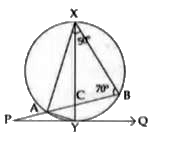Determine if the points (1, 5), (2, 3) and (-2, -11) are collinear. Solution in Kannada
Step by step video & image solution for Determine if the points (1, 5), (2, 3) and (-2, -11) are collinear. by Maths experts to help you in doubts & scoring excellent marks in Class 10 exams.
Updated on:21/07/2023Topper's Solved these Questions
- CO-ORDINATE GEOMETRYBOOK - ZEN PUBLICATIONCHAPTER - CO-ORDINATE GEOMETRYEXERCISE - TEXTUAL EXERCISE EXERCISE 7.2
10 Videos
- CO-ORDINATE GEOMETRYBOOK - ZEN PUBLICATIONCHAPTER - CO-ORDINATE GEOMETRYEXERCISE - TEXTUAL EXERCISE EXERCISE 7.3
5 Videos
- CO-ORDINATE GEOMETRYBOOK - ZEN PUBLICATIONCHAPTER - CO-ORDINATE GEOMETRYEXERCISE - ZEN ADDITIONAL QUESTIONS - HIGHER ORDER THINKING SKILLS [HOTS] QUESTIONS
14 Videos
- CIRCLESBOOK - ZEN PUBLICATIONCHAPTER - CIRCLESEXERCISE - ZEN ADDITIONAL QUESTIONS ( HOT [HIGHER ORDER THINKING SKILLS] - QUESTIONS) (IIT AND IMO)
9 Videos
- CONSTRUCTIONSBOOK - ZEN PUBLICATIONCHAPTER - CONSTRUCTIONSEXERCISE - ZEN ADDITIONAL QUESTIONS ( HOTS [HIGHER ORDER THINKING SKILLS] - QUESTIONS) IIT /OLYMPIAD/ IMO
5 Videos
Similar Questions
Find the corrdinates of the point which divides the join of (-1, 7) and (4, -3) into the ratio 2 : 3 internally.
View SolutionFind the area of the triangle whose vertices are:
(i) (2,3), (-1,0), (2,-4) (ii) (-5,-1), (3,-5), (5, 2)
View SolutionIn what ratio does 4x +3y-13 0 divide the line segment joining (2, 1) and (1, 4)?
View SolutionIn the adjoining figure, XY is a diameter of the circle and PQ is a tangent to the circle at Y. Given that ⌊AXB=50∘ and ⌊ABX=70∘, calculate ⌊BAY and ⌊APY.

View SolutionGiven below are the steps of construction of a pair of tangents to a circle of radius 4 cm from a point on the concentric circle of radius 6 cm. Find which of the following steps is wrong.
(P) Step 1: Take a point O on the plane paper and draw a circle of radius OA = 4 cm. Also draw a concentric circle of radius OB = 6 cm.
(Q) Step 2: Find the midpoint C of OB and draw a circle of radius BA= AO. Suppose this circle intersects the circle of radius 4 cm at P and Q.
(R) Step 3: Join BP and BQ to get the desired tangents.
View SolutionDetermine if the points (1, 5), (2, 3) and (−2, −11) are collinear.
View SolutionDetermine if the points (1,5),(2,3) and (-2,-11) are collinear.
View Solutiondetermine if the points (1,5),(2,3) and (-2,-11) are collinear.
View SolutionUsing determinants show that the following points are collinear: (i) (3, -2), (8, 8) and (5, 2) (ii) (2, 3), (-1, -2) and (5, 8)
View SolutionUsing determinants, find the area of the triangle whose vertices are (1, 4), (2, 3) and (-5, -3). Are the given points collinear?
View SolutionDetermine whether the points are collinear
L(−2,3),M(1,−3),N(5,4)
View SolutionDetermine whether the following points are collinear
L(2,5),M(3,3),N(5,1)
View SolutionDetermine whether the given points are collinear.
P(1,2),Q(2,85),R(3,65)
View Solutionनिर्धारित कीजिए की क्या बिंदु (1, 5), (2, 3) और (-2, -11) संरेखी हैं ।
View SolutionIf the points A(2,β,3),B(α,−5,1) and C (-1 , 11 , 9 ) are collinear , then
View Solutionshow by vector method that the points (2, -1, 3), (3, -5, 1) and (-1, 11, 9) are collinear.
View Solution
